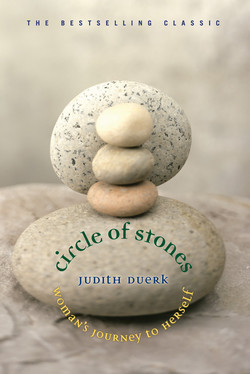Читать книгу Circle of Stones - Judith Duerk - Страница 11
На сайте Литреса книга снята с продажи.
ОглавлениеIntroduction
Sometimes dreams alter the course of an entire life.
In the summer of my forty-sixth year, one day before my birthday, I had a dream that did not so much alter the course of my life as it did confirm, in the deepest possible way, its pre-existing course—confirm that which my life already, however gropingly, was becoming.
For two years before the dream, a series of images had come to me around the motif of women seated in a circle, coming together to understand their lives. The images had come, wondrously, one by one, each time as I was about to lead a women’s group in monthly retreat. Each image began with the words “How might your life have been different if …” They named themselves the Circle of Stones.
Into this, then, came the dream. It took that which I cared most deeply about in myself and my work and turned it over slowly and thoughtfully, reflecting various aspects of it and pointing out its validity and meaning. The dream said to me that what I was doing, my life, my ideas, and my work, were coming out of a center inside myself. It said that I needed to trust the truth of that process and to let it come out more fully. I needed to leave behind an allegiance to the collective values in order to trust that which was truly individual, was truly my own, a woman’s own, was very much needed.
The dream and images themselves spoke powerfully to me of my life as woman. The women with whom I shared them were moved by them. I thought that they might carry meaning to other women, also. And so I began, tentatively, to write.
This present writing grew, bit by bit, as the dream unfolded and intertwined with the images. As the meaning of one piece, then another, emerged, a configuration began to take shape. It was of a woman separating from her surroundings and letting herself come to birth.
Many times I faltered or held back, through lack of faith or self-doubt. The last link to fall into place was The Elamites. I dimly remembered a mention of Elam from childhood Old Testament lessons. This part of the circle was brought ‘round when a teacher of Hebrew identified Elam as among the last of lands honouring the feminine Deity, among the last of lands where woman had a voice.
The dream’s final scene portrayed a young woman of today newly come to her own voice, newly come to her authority in outer affairs, while remaining grounded in her inner feeling values. It completed the circle.
This writing attempts to reflect the intertwining of the initiating images, the dream, and women’s experiencing of them.
